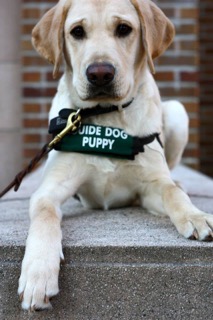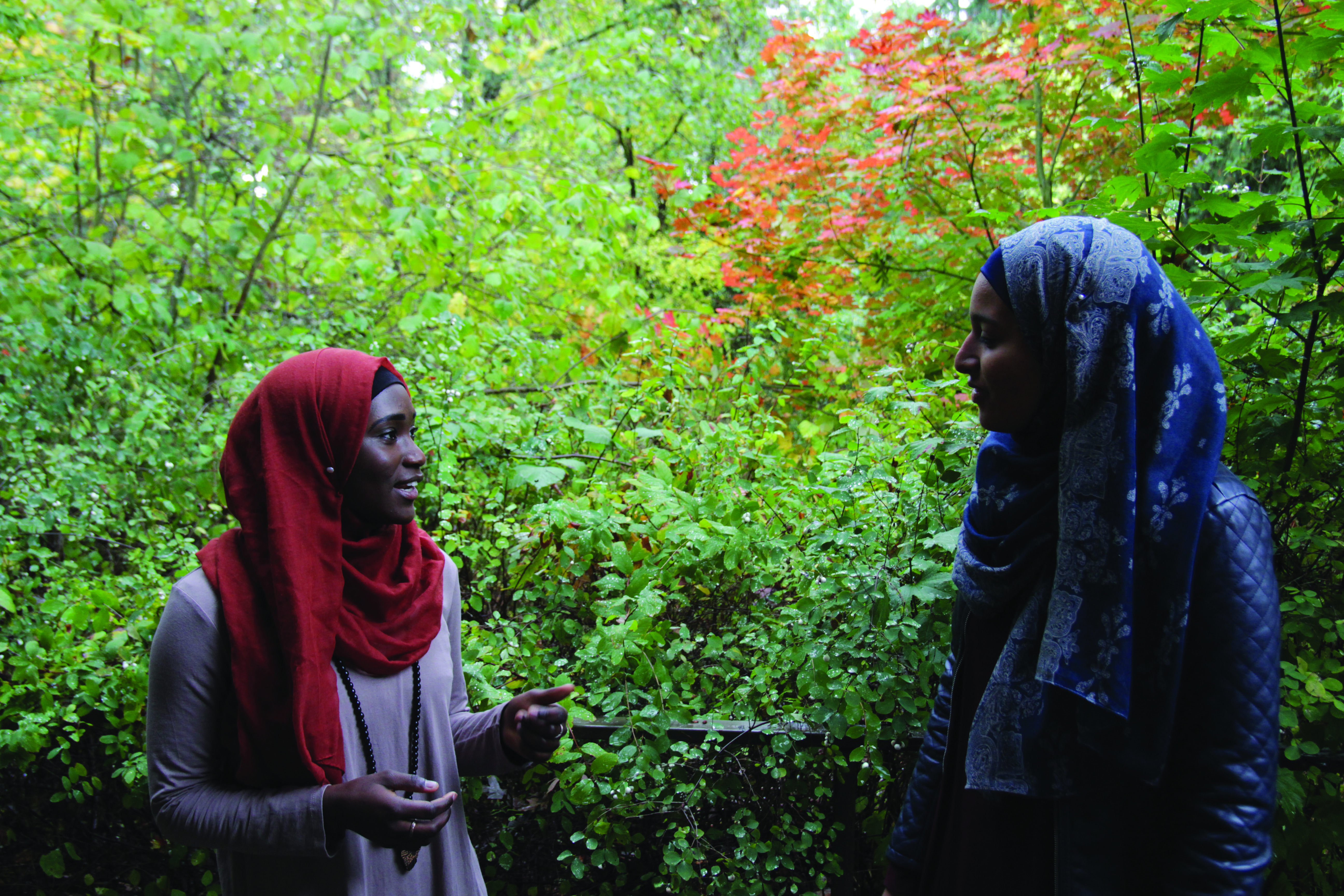

By Reland Tuomi, Editor-in-Chief
While most of us can agree that it is nearly impossible to not pet a dog whenever we see one, it is not always what the owner wants you to do. That is the feeling senior Morgan Woods has every time someone tries to pet Indio, her guide dog in training.
“People will just reach out and start petting him,” Woods said. “The proper etiquette is to ask before you do.”
Students may have seen Woods and Indio, a yellow lab wearing a green vest, walking around campus. The vest reads “Puppy In Training,” meaning the dog wearing the vest is being trained as a service animal.
Animals being trained for services, such as guide dogs for the blind or bomb sniffing for police, begin their training at eight weeks old and are returned to the training school between 13 and 18 months old.
During this training, the trainer must ensure the dog is properly exercised, fed a healthy diet and able to follow commands and understand when it is working and when it is O.K. to play.
Woods said people petting Indio is bad for his training because he doesn’t know the difference between work and play.
“It’s my job to teach him that when he’s in the vest, he is at work,” Woods said.
Woods also said people come up and pet him three to four times per day, usually between classes and passing in the halls.
Woods said people petting Indio is bad for his training because he doesn’t know the difference between work and play.
“It’s my job to teach him that when he’s in the vest, he is at work,” Woods said.
Woods also said people come up and pet him three to four times per day, usually between classes and passing in the halls.
“People in my class are fine because I tell them he’s in training,” Woods said.
“But sometimes people will have their hands out, and then ask to pet him.”
There are currently three puppies on campus and potentially a fourth one coming soon. Even though it is hard work training a puppy to be a guide dog, Woods said she’s having a lot of fun.
“You get two days to play with them and treat them like a puppy, and then training begins,” Woods said.
“We get to keep [Indio] for about a year, which is basically the best part of a dog’s life.”
To learn more about proper guide dog etiquette or how to join a training program, go to http://welcome.guidedogs.com/.


























